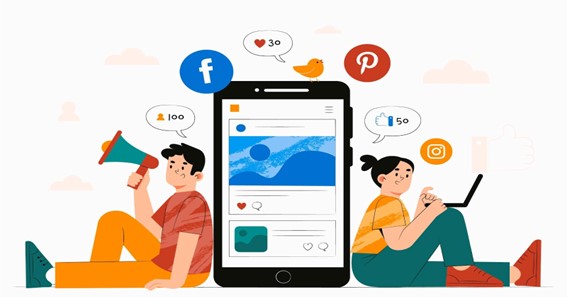Social media has become a powerful tool for companies to reach their target audience. Social media is crucial for life science companies. Marketing for life sciences requires a unique approach. These companies operate in a regulated and specialized industry.
As life science professionals, our expertise lies in scientific research and development. But in today’s digital age, marketing has become integral to promoting our products and reaching out to potential customers. Social media marketing has emerged as a powerful tool for life science companies to connect with their audience and build their brand online.
In this blog post, we’ll share seven tips on life sciences marketing and best practices for social media marketing.
-
Contents
Understand Your Target Audience
The first step in any marketing strategy is to understand your target audience. Life science companies must grasp scientists’ needs and pain points. This requires tailored solutions to improve research and development processes. Conduct market research to understand their preferences, behaviors, and challenges.
-
Develop a Content Strategy
Once you understand your audience, you can develop a resonant content strategy. Share content that is educational, informative, and relevant to their needs. This can include blog posts, infographics, videos, and other types of content. These strategies help you boost life science marketing.
-
Choose the Right Social Media Platforms
Not all social media platforms are equal, and each has its strengths. LinkedIn is often the most effective platform for marketing life sciences. Depending on your goals and target audience, Twitter and Facebook can also be useful.
Click here – What Is Allocated Bourbon?
-
Be consistent
Consistency is key when it comes to social media marketing. Develop a posting schedule and stick to it. This will help you build a following and keep your audience engaged. Being consistent is the best digital marketing for life sciences practices.
-
Engage with Your Audience
Social media is a two-way street, and engaging with your audience is important. Respond to comments and messages on time and ask for feedback and input. Building relationships with your audience fosters a sense of community. Engage with them, listen to their feedback, and show them genuine care.
By following these steps, your marketing for life sciences reaches new heights.
-
Stay Up-To-Date on Industry News and Trends
Life sciences is an evolving industry. It’s important to stay up-to-date on the latest news and trends. Stay ahead by sharing industry news & insights on social media. Establish thought leadership and gain a competitive advantage.
-
Measure Your Results
Finally, it’s important to measure the success of your social media marketing efforts. Use analytics tools to track your performance and adjust your strategy as needed.
Optimize your social media presence to achieve marketing goals. Strategic content, consistent branding, and engagement are key factors for success.
Best Practices of Social Media Marketing for Life Science Companies

- Stay aware of your industry’s trends and regulations.
- Leverage the social media platforms that are most relevant to your audience.
- Focus on creating high-quality, informative content.
- Engage with your audience and encourage user-generated content.
- Use social media to establish thought leadership and showcase expertise.
- Collaborate with influencers and thought leaders in the industry.
- Measure the success of your social media campaigns and adjust as needed.
- Consider partnering with a specialized life sciences marketing company. You can consider a pharma marketing agency for more support and expertise.
- Conduct a thorough social media audit to identify your company’s strengths and weaknesses.
- Stay informed of the latest developments in social media algorithms.
- Use data analytics tools to track the effectiveness of your campaigns.
- Incorporate visuals, such as infographics, to enhance the impact of your content.
- Consider using paid advertising to reach a wider audience and increase engagement.
- Stay compliant with FDA regulations and guidelines related to pharmaceutical marketing.
- Check and respond to customer feedback and inquiries.
Click here – 7 Majors with Global Career Opportunities
Which Social Media Network Should You Use for Life Sciences Marketing?
With so many social media networks available. It is difficult to determine which one is superior to the others. Each platform has its own set of pros and cons, including audience demographics and scope.
To help you choose the right platform for your target audience and customer profile. I have analyzed each platform below.
When it comes to the LinkedIn platform, known for its corporate-oriented profiles, this is evident from the fact that the main age demographic of the platform’s 730 million users is under 35. Around 63% of users visit the site monthly, while 22% visit weekly.
Targeting senior business leaders with purchasing power? Use LinkedIn! Its audience of older professionals makes it ideal for B2B marketing.
Facebook has 2.7 billion users, making it the largest traditional social network. The platform’s largest user base is between 25 and 34 years old. If your target audience is graduates or entry-level managers, Facebook is ideal.
Twitter is a simple platform with short-form posts that are easy to consume and engage with. Twitter users spend around four minutes per session. The main age demographic of users is 30-49 years old. 42 percent of Twitter users say they may earn more than the general population.
Instagram has grown from a simple photo-sharing app. Become the second-largest social media network after Facebook. Approximately 33% of users are between 25-34 years old and spend almost 30 minutes on the app daily. Rather than written content, images are key on this platform.
If you are doing marketing for life sciences brand, consider sharing photos of science in action. Instagram is the best place for you to live in digital marketing.
YouTube
YouTube is often referred to as the internet’s video search engine. YouTube has over 2 billion active monthly users, and the main age demographic is between 15-25 years old. Retention time on the platform is good, with over 40 minutes per user session.
However, creating video content is harder than other forms of content. Producing any type of content, including formal business announcements, is possible. You can create videos on how-to science guides or behind-the-scenes company blogs.
TikTok
TikTok is the most popular new social media network. TikTok saw a significant increase in users during worldwide lockdowns. However, it has fewer users, at around 100 million. The main demographic is 18–24 years old, and users spend over 45 minutes daily on the platform.
While these users may be too young. But the platform’s impact could be significant in the future. Social media marketing can be a powerful tool for marketing for life sciences, allowing for targeted outreach and engagement with a wide audience.
Conclusion
Social media marketing has become integral to the life sciences industry’s marketing strategies. Life science companies must use social media to connect with their audience, establish thought leadership, and build a brand reputation online.
By following the tips and best practices outlined in this blog post, life science companies can create rich content, engage with their audience, and measure the success of their social media campaigns.
LinkedIn and Twitter are great for thought leadership and relationship-building with stakeholders. Maximize impact by using both platforms. But, it’s important to approach social media marketing with a clear strategy. Life science companies can leverage social media to enhance their brand.

